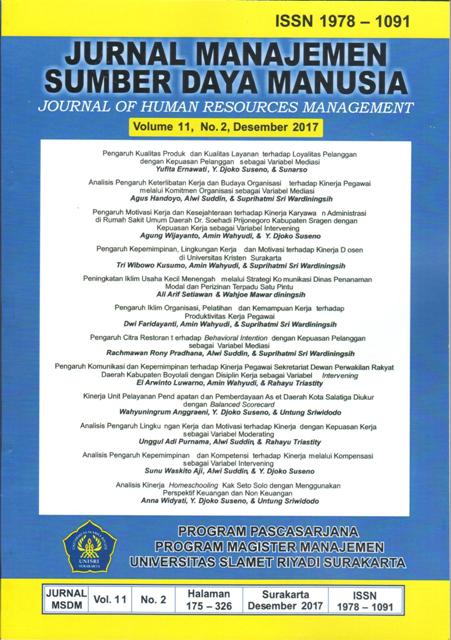PENINGKATAN IKLIM USAHA KECIL MENENGAH MELALUI STRATEGI KOMUNIKASI DINAS PENANAMAN MODAL DAN PERIZINAN TERPADU SATU PINTU
Abstract
Small and Medium Enterprises (SMEs) are of special concern to the
government. Reform and regional autonomy triggered the implementation
and development of a new public service bureaucracy (NPS) into the
administration of public services. NPS places the citizens to be served. One
government program is One Stop Service (OSS). OSS uses the principle of
work easy, cheap, fast and can be transparent. Thus, the institution
concerned makes communication strategy based on media strategy so that
people are more familiar and actively participate. This study aims to find out
how the implementation of the communication strategy, and how the
effectiveness of communication strategies to the public in Sragen regency.
Data were collected by interviewing the resource persons involved in the
compilation and implementation of the communication strategy and by
collecting supporting data. The results show that DPMPTSP works together
with related SKPD, improvise to formulate and run socialization and
publication through media according to the typology of audience. DPMPTSP
avoids high-cost media and further maximizes the potential of existing
resources. As a mainstay for further development is the online media.
Nevertheless DPMPTSP has succeeded in improvisation as evidenced by
the increase of applicants for permits and growth of SMEs.
Keywords: SME, one stop service, government communication strategy
Downloads
Published
How to Cite
Issue
Section
License
Authors who publish this journal agree to the following terms:
- Authors retain copyright and grant the journal right of first publication with the work simultaneously licensed under a Creative Commons Attribution License that allows others to share the work with an acknowledgement of the work's authorship and initial publication in this journal.
- Authors can separately make additional contractual arrangements for non-exclusive distribution published by the journal (e.g., publish it in a book), with an acknowledgement of its initial publication in this journal.
- Authors are allowed and encouraged to send their work via online (e.g., in the institutional repositories or their website) after published by the journal.













 Â
 
